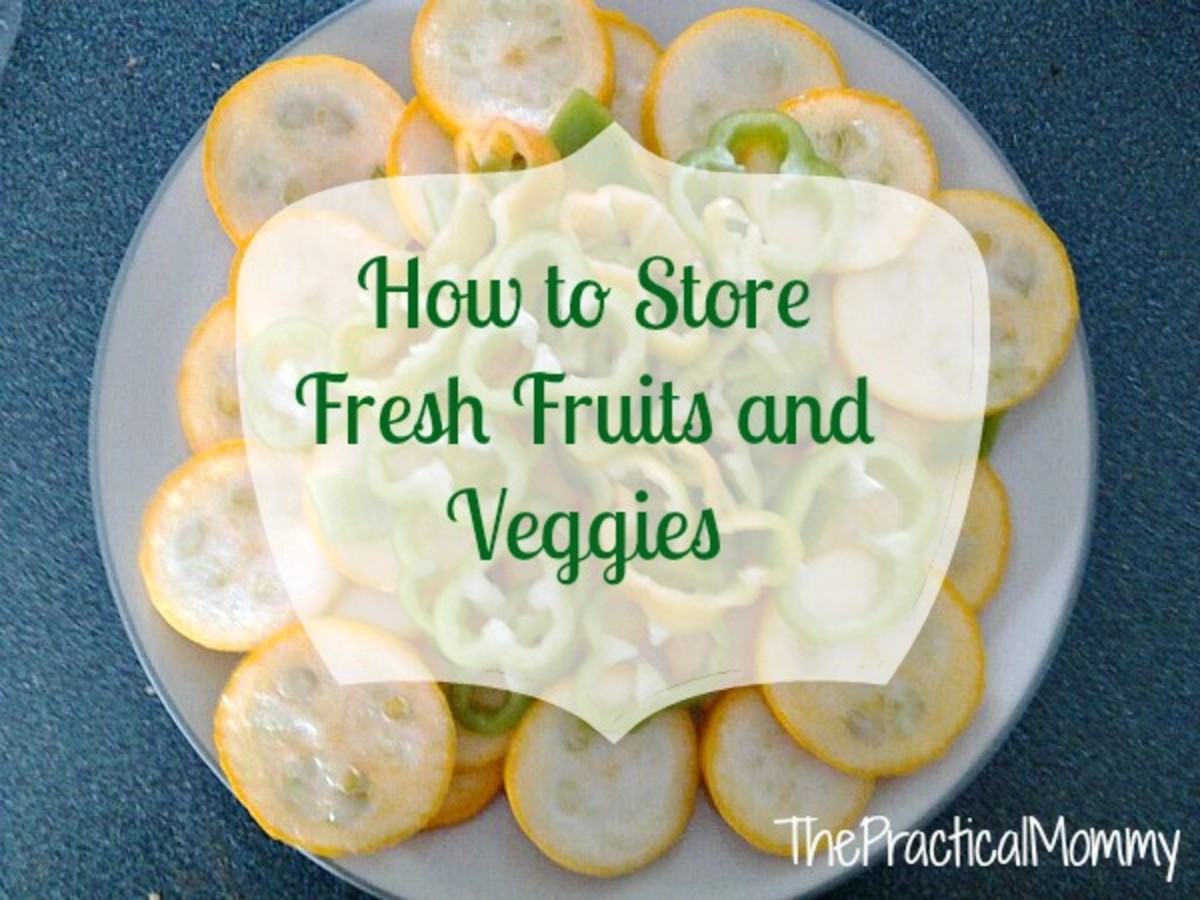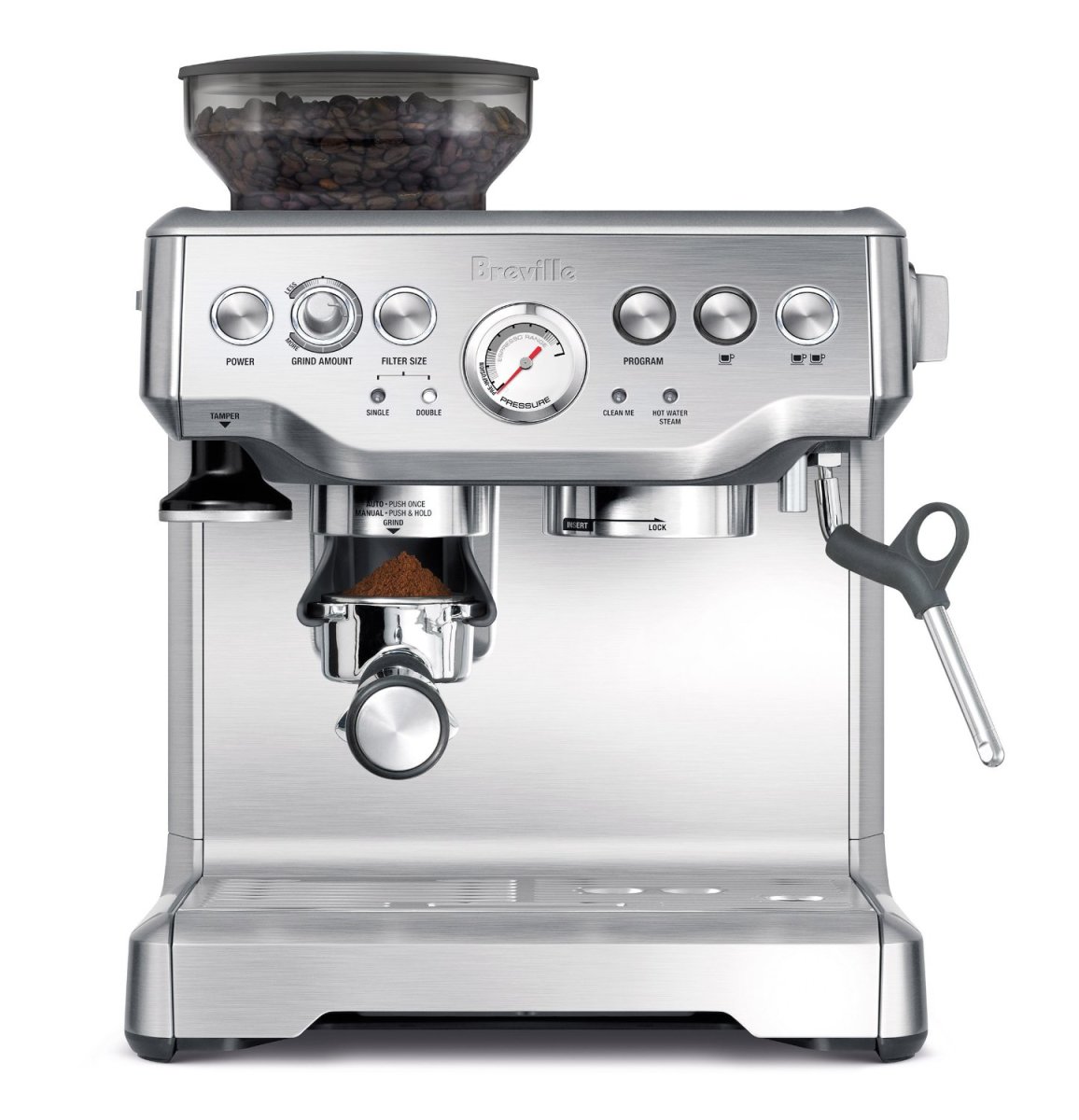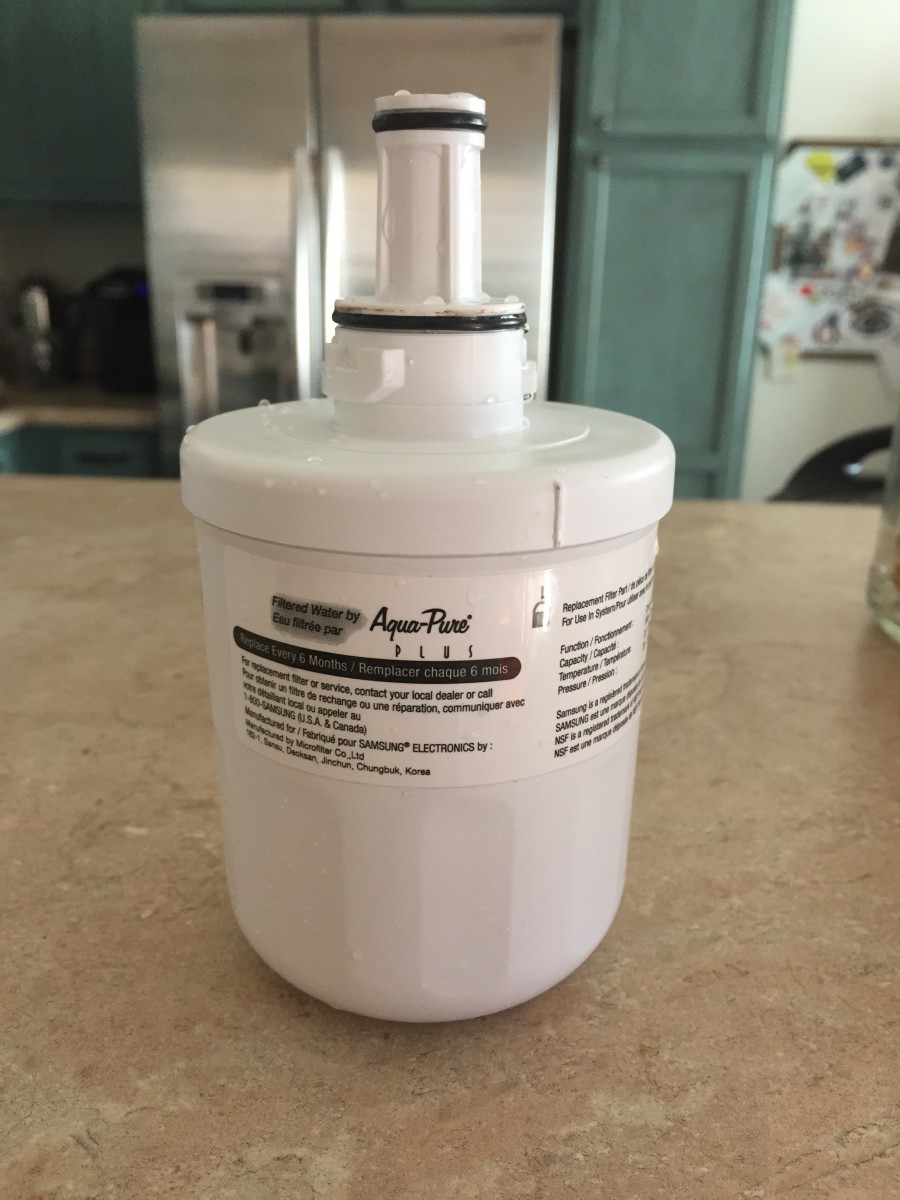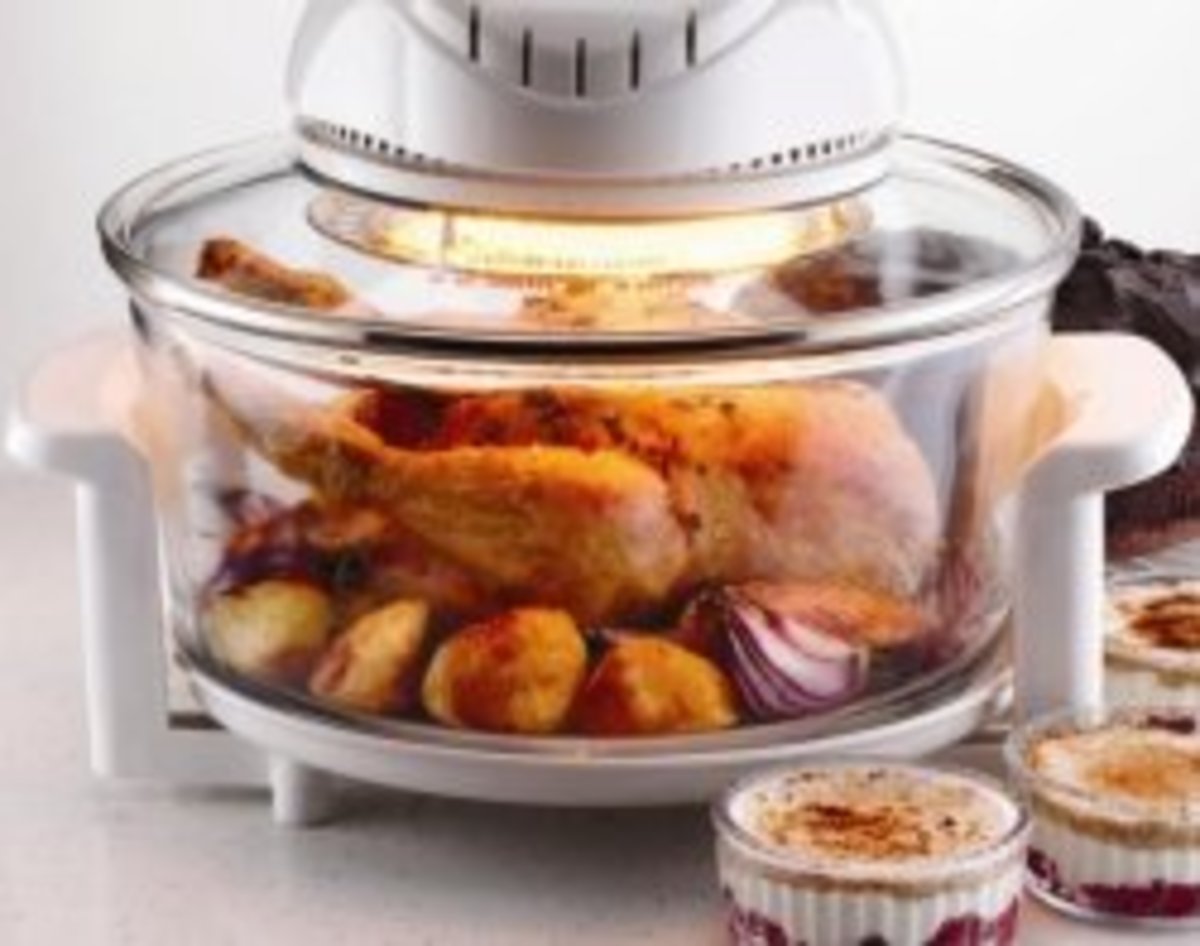- HubPages»
- Home and Garden»
- Home Appliances»
- Kitchen Appliances
A Well-Behaved Viking: How to Use Your Refrigerator
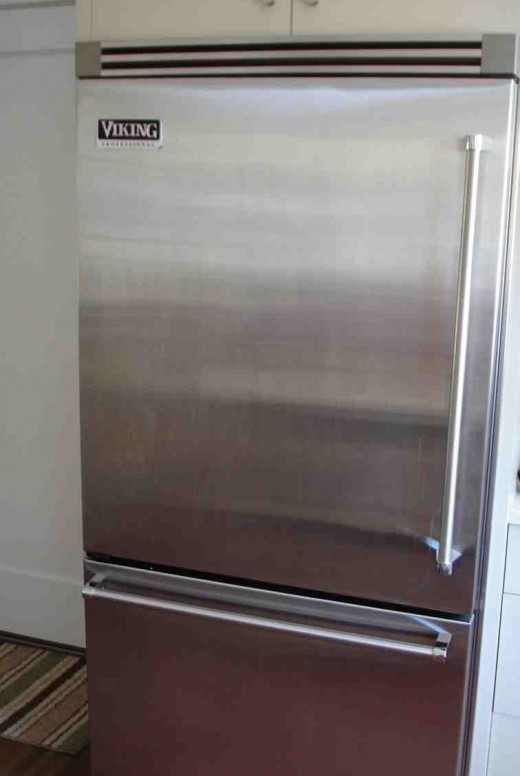
Unpacking the Groceries
Today I paid $389 for groceries. Even with a frighteningly organized list, it took a long time. Comparing leeks, selecting the appropriately prudent level of oil virginity, and discussing cuts with the butcher require time. The short drive home provides a chance to catch my breath, enjoy some rock and roll therapy, and prepare for the not-as-much-fun task of putting it all away.
I have a handsome, large refrigerator, with all of the features I want. It has handy nooks for storing the little this and thats, and it has big shelves that are well suited to large objects such as roasting pans and defrosting birds. Nonetheless, when I'm entertaining our family "Big Night" style, the fridge's spaces ends up chock full, chock-a-block with the fresh ingredients critical to a serious feast. In our ongoing pursuit to save energy, we gave up the second fridge in the garage, vowing to do more with less. Here are some things I learned about using refrigerator space efficiently.
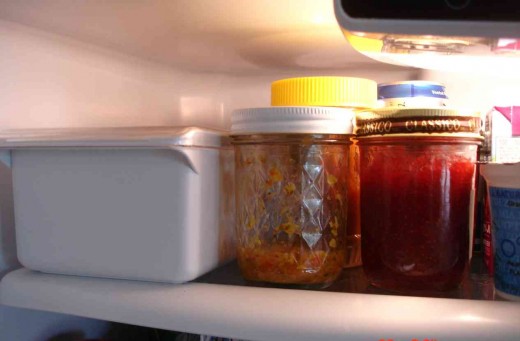
How tall are your shelves?
First, I know this sounds like a no-brainer, but making the most of your space depends upon putting the right things in the right places. Store short things on short shelves, and tall things on tall shelves. Store flat things in flat areas. Seriously, sometime when your fridge seems to have become menacingly full without having added anything, check and see how many items are in places that they don't belong. The "tall area" needs to be reserved for tall items. You don't want to open the door 1 hour before the party, when you need to get your pitcher of wicked punch chilling now, only to find that you have to waste time rearranging the fig jam and the butter dish. That short shelf is great for small jars, flat breads, squat hummus containers, half-size beverage cans, butter packages, and eggs. Don't use up the big shelf with those items.
While I'm on the topic of eggs, I am a convert to using the fancy egg container that came with my fridge. It holds one dozen eggs with the special insert, and two dozen eggs without it. It has a rigid cover upon which more items may be placed. I'm on the third refrigerator in my life, and now I finally get it.
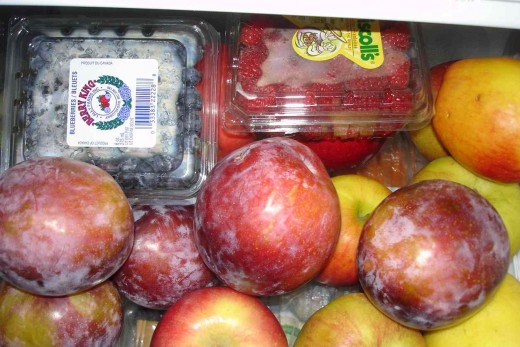
What's in your drawers?
Naughty, naughty. I mean, what's in your fruit and vegetable drawers? Well, in mine I keep fruit and vegetables, but I have also seen them filled with beer, wine, dry goods, and art supplies. When you keep your fruit and veg drawers as full as I do, you need to make sure their contents do not become some sort of fermented liquid, and it's nice if they look attractive, which encourages you to consume their nutritious contents.
Here's what works for me. When I unpack a major load of fresh produce, I do the following:
- Pull the produce drawer(s) completely out, place the items that are "gone" in your compost bin, and identify near-term applications for any items that are "almost gone." (Hints: turn the veg drawer into soup or ratatouille and turn the fruit drawer into daquiris.)
- Clean the bottom of the drawer, if needed.
- Where it makes sense to do so, remove produce from any bags they are in.
- Wash any new items, if it's okay to do that before storing. For example, apples may be washed, but berries should remain unwashed until you want to eat them.
- Stack or pile the fruit and veggies in the drawer, heaviest and firmest items on the bottom, in general, but with a sufficient variety in view to entice consumption. If you can see them, you're more likely to use them, and less likely to waste them.
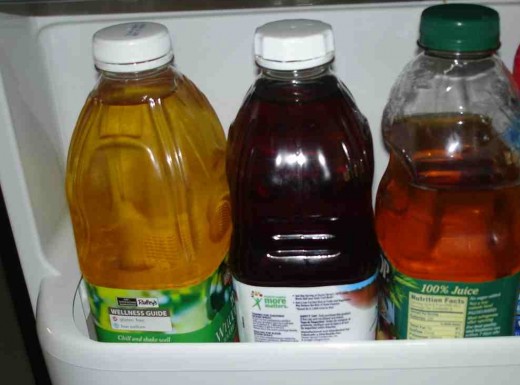
Buy the Right Sizes
My little son loves milk, water, and when we allow it, juice. It's nice to have a selection, and stores offer a good variety of no-sugar-added juices these days, so we keep three containers of juice in the fridge. The big round bottles, I have found, take up more room than they need to. The bottles with a rectangular footprint, on the other hand, stack neatly next to each other in the door, which is a spot my son can reach. My grocery store offers all of the fruit juices we like, in brands we like, in bottles of this shape. Ditto for milk containers - buy something that you like, that fits in the space you have, and that has the minimal footprint, especially if you need to keep multiple units on hand.
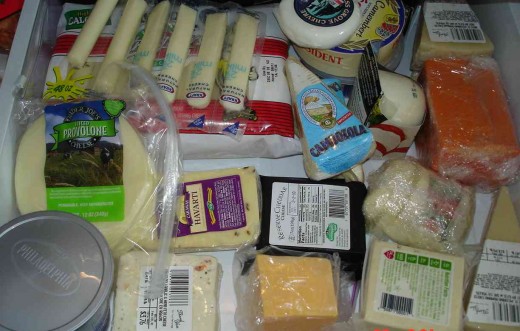
The Cheese and/or Meat Drawers
Cheese is wonderful. My sister gave me a wonderful book on cheese, and a large slate server. The slate's size dictates that at least four cheeses be served on it if you're going to bother pulling it out, so twist my arm. I'll buy more cheese. If you have a special and/or roomy place to store your cheese, think about this approach:
- Buy the cheese you use often in large sizes, on sale, then split it into manageable chunks and wrap each chunk tightly. Store extras toward the back of the drawer. Some cheeses may be stored in the freezer for a month or two.
- Keep the cheeses that you use most often up front.
- Make use of extra space in the drawer for items that are awkward elsewhere, such as Champagne bottles.
If you don't partake of meat, then your meat drawer is available for other items that you might want to keep separate: condiments? Art supplies? Beer?
Here are some meat-related tips for using this specialty drawer:
- If practical, purchase frequently used items in bulk, and wrap separately, as described above for cheese.
- Store frequently used items, such as deli meats, up front. Wrap them conveniently, but well, as the front of the drawer is subject to more temperature fluctuations than the back.
- Use a sharpie or other highly-visable labeling method to put the expiration dates on the packages in big, bold numbers. Nothing is yuckier than spoiled meat.
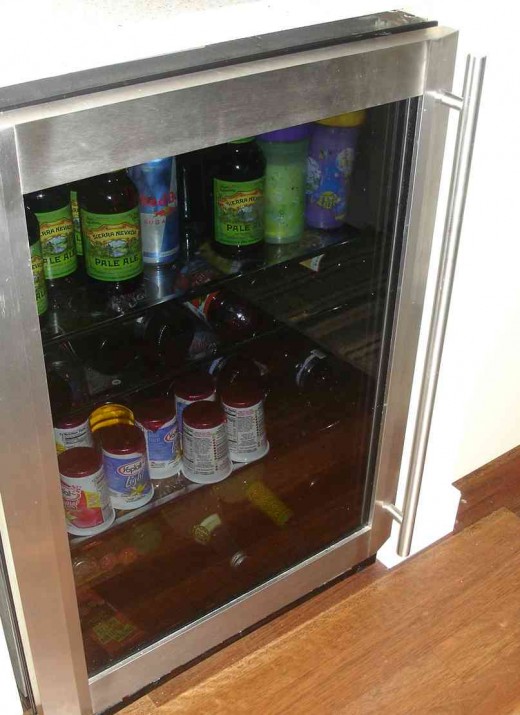
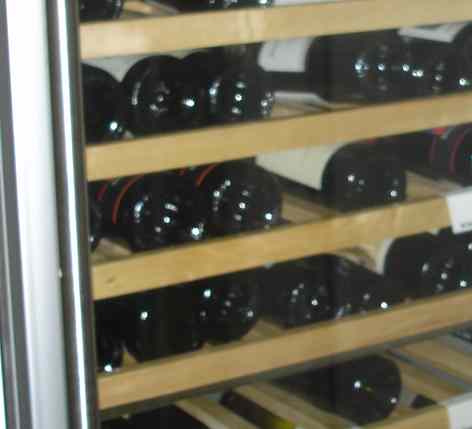
Need Extra Units?
Even with efficient storage, you might run out of room if you like to keep cold a large selection of beverages or other specialty items. Our family and guests enjoy having a nice selection of tasty beers on hand, and the kids enjoy having a nice selection of "approved" snacks and beverages within reach. When we opted for the bottom freezer fridge, we knew that for the youngest kitchen-loiterers to have access, we needed another unit. This gave us an excuse for purchasing a mini-fridge. Here it is, with beer, mixers, sippy cups, and kid-friendly snacks. I've been known to remove all of the beer to an iced cooler and store holiday feast provisions in here.
Your refrigerator is not the place for wine. Chill bubbly in it, yes, but keep wine at the proper temperature and humidity in a wine cellar. If you have a basement or storm cellar or [way cool] an actual wine cellar, then you're probably covered easily. If not, check out the very wide selection of free-standing wine cellars available. That was our solution when we moved out of our house-with-a-basement to our house-with-a-hot-garage. Our new freestanding unit holds about 150 bottles less than our cellar in the basement did. A fun problem to have.
Know Your Unit
Finally, pay attention to what you have. Is there a spot on the top shelf that gets just a little colder than others? That's not the ideal spot for the sour cream, or lettuce, or anything else that might not survive the serious chill. It might, however, be a good spot for chilling beverages or for longer-term storage of cheese.
Are there humid spots? Does the shelf near the door get too warm? My old fridge had these issues, and it was just a matter of storing the right items in the right places. That rental unit or that old model you're squeezing another year from--and I know you would exchange it immediately for a shiny new energy-efficient model if that were possible--can still be your friend. Figure out how your unit acts, what its quirks are, and how the spaces work, and make it work for you.



